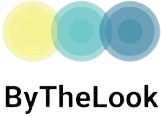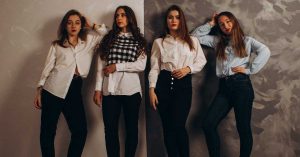In today’s digital era, Canadian fashion influencers are not just trendsetters but pivotal figures in the global fashion industry, leveraging platforms like ByTheLook to expand their influence and commercial reach. These influencers are at the forefront of a movement that combines style, technology, and commerce in innovative ways.
The Rise of Influencer-Driven Fashion Commerce
The fashion industry is witnessing a transformative era where influencer-driven commerce is becoming a major force in shaping consumer behavior and fashion trends. With the advent of social media platforms, influencers have emerged as pivotal figures in the fashion world, bridging the gap between brands and consumers. This trend is exemplified by platforms like ByTheLook, a Canadian initiative that has revolutionized how fashion is consumed and sold online.
At its core, ByTheLook operates as a Platform-as-a-Service (PaaS), designed specifically for social media influencers to model entire outfits that are ready for purchase at the click of a button. This innovative approach harnesses Machine Learning (ML) technology to feed and analyze data from recent and trending fashion posts. The insights gleaned from this data help inform apparel manufacturers about current fashion trends, enabling them to produce on-demand apparel that meets the latest style preferences of consumers.
The rise of influencer-driven fashion commerce is largely fueled by the ability of influencers to engage with large audiences. Influencers wield the power to shape opinions and trends through their curated content and personal style recommendations. By partnering with platforms like ByTheLook, they can showcase and sell curated outfits directly to their followers. This direct-to-consumer model not only simplifies the buying process but also ensures that influencers can monetize their influence more effectively.
Another significant aspect of influencer-driven commerce is the rapid cycle from trend identification to product availability. Traditional fashion retail often experiences a delay between spotting a trend and having it available for consumers. However, ByTheLook’s ML technology allows for real-time analysis of fashion trends from top influencers’ posts. This immediacy helps manufacturers quickly adapt and produce garments that are currently in demand, thus reducing the time from runway to retail.
Economically, this model has profound implications. It enables influencers to earn a commission from each sale made through their platform, thereby incentivizing them to promote outfits that resonate with their audience. For manufacturers, it reduces the risks associated with overproduction and holding unsold inventory, as production is closely aligned with proven consumer interests reflected in influencer activities.
The challenges associated with influencer-driven commerce include maintaining authenticity and transparency. Consumers today are more discerning and value authenticity over blatant promotion. Successful influencers in this commerce model are those who manage to keep their personal brand genuine while effectively promoting products. This balance is crucial for maintaining trust and credibility among followers. Additionally, the influencer-driven model demands that influencers disclose any commercial relationships or endorsements to comply with advertising standards, further emphasizing the need for transparency.
Despite these challenges, the opportunities within influencer-driven commerce are substantial. It allows for a more personalized shopping experience, as influencers often cater to specific niches or demographics. This personalization is not just beneficial for consumers who receive tailored fashion recommendations but also for brands that can target their marketing efforts more effectively. Moreover, this model supports a dynamic supply chain that responds quickly to changes in consumer preferences, which is especially valuable in the fast-paced fashion industry.
The environmental impact of this model can also be positive. By reducing the need for large inventories and minimizing waste through on-demand production, influencer-driven commerce can contribute to more sustainable fashion practices. This is increasingly important as both consumers and businesses are becoming more environmentally conscious.
Furthermore, the global reach of influencers provides brands with the opportunity to access international markets more easily. Influencers with diverse and widespread audiences can introduce products to new geographical areas without the need for extensive physical retail networks. This globalization of fashion commerce is not only cost-effective but also allows for a broader exchange of fashion cultures and styles.
Looking forward, the potential for growth in influencer-driven commerce is immense. As technology advances, we can expect more sophisticated tools for data analysis and customer engagement to emerge, further enhancing the effectiveness of this model. Additionally, as more influencers and brands see the value in this approach, we will likely witness an increase in collaborations and partnerships that leverage the unique strengths of each party.
The Strategic Role of Canadian Fashion Influencers
Canadian fashion influencers have carved out a strategic niche in the global fashion landscape, blending local trends with international flair to create a unique market space that resonates both domestically and abroad. Their strategic role is multifaceted, involving the curation of fashion content, engagement with diverse audiences, and collaboration with fashion brands and platforms like ByTheLook, which is revolutionizing how fashion is marketed and consumed.
Firstly, Canadian fashion influencers serve as trendsetters. They have a keen eye for upcoming trends, often before they hit mainstream markets. By showcasing these trends through their platforms, they not only influence consumer behavior but also guide the fashion industry towards new directions. This trendsetting capability is crucial for brands looking to stay relevant in a competitive market, as influencers provide them with insights into consumer preferences and emerging styles.
Moreover, Canadian influencers are adept at audience engagement. They build strong, trust-based relationships with their followers, who often look to them for fashion advice and recommendations. This rapport is invaluable for fashion brands seeking to build a loyal customer base. Influencers’ ability to authentically connect with their audience makes them effective ambassadors for brands. By leveraging these relationships, influencers can significantly impact a brand’s visibility and consumer reach.
Collaboration with platforms like ByTheLook highlights another strategic role of Canadian fashion influencers. ByTheLook provides a seamless interface where influencers can showcase curated outfits ready for purchase at the click of a button, incorporating advanced Machine Learning algorithms to analyze fashion trends based on influencer activity and social media engagements. This technology-driven approach allows influencers to offer their followers the latest styles in a highly accessible manner, enhancing the shopping experience and ensuring that consumers can easily obtain the outfits they see on their favorite influencers.
The strategic role of Canadian fashion influencers also extends to the marketing realm. In an age where traditional advertising often falls flat, influencers offer a personal touch. They can create unique content that resonates with their audience, whether through blog posts, social media updates, or video content. This content is not only more engaging but also allows for subtle product placements and promotions that feel more genuine compared to standard advertisements.
Additionally, Canadian fashion influencers have begun embracing and promoting sustainable and ethical fashion, which is increasingly important to modern consumers. They often partner with brands that prioritize sustainability, thus influencing the industry to adopt more environmentally friendly practices. This shift is significant as it positions influencers as leaders in the movement towards sustainability in fashion, enhancing their strategic importance to brands and consumers alike.
Bridging Technology and Style
The intersection of technology and style has become increasingly prominent in the fashion industry, catalyzing new trends and transforming traditional retail landscapes. This fusion, exemplified by innovative platforms like ByTheLook, demonstrates how technology not only complements but also enhances the stylistic elements of fashion, creating a more dynamic, accessible, and efficient marketplace.
At its core, the bridging of technology and style revolves around the integration of advanced tools and methodologies to streamline the design, production, and distribution processes. ByTheLook, a pioneering platform in this realm, leverages Machine Learning (ML) technology to analyze real-time data from social media and fashion influencers. This approach allows the platform to identify current fashion trends as they emerge, enabling manufacturers to quickly adapt and produce designs that are in high demand.
This technology-driven strategy addresses one of the traditional challenges in fashion retail: the speed of trend adaptation. In the past, it could take weeks, if not months, for designers to move from trend identification to product availability. Now, with platforms like ByTheLook, the cycle from design to retail can be dramatically shortened. This not only satisfies the consumer’s desire for immediate access to the latest styles but also reduces inventory waste, as manufacturers can produce based on current, data-driven demand forecasts.
Moreover, the use of technology in fashion extends beyond production and into the consumer interaction phase. E-commerce platforms equipped with AI and ML offer personalized shopping experiences by recommending products based on the user’s browsing and purchase history. This level of personalization enhances customer satisfaction and loyalty as consumers feel uniquely catered to, which in turn increases sales and brand affinity.
Augmented Reality (AR) is another technological advancement enhancing the consumer experience in fashion. AR allows customers to see how certain clothes will look on them without physically trying them on, bridging the gap between online shopping and the in-store experience. By integrating AR, platforms like ByTheLook can offer a more interactive and engaging shopping experience, appealing to tech-savvy consumers who value innovation and convenience.
Sustainability is another critical area where technology meets style. With increasing awareness of the fashion industry’s environmental impact, technology offers tools for creating more sustainable practices. From using AI to optimize fabric cutting to reduce waste to blockchain for tracing the sustainability credentials of garments, technology empowers brands to meet the growing consumer demand for environmentally friendly products.
In addition, digital platforms are crucial for storytelling and brand-building in fashion. They allow designers and brands to convey their vision and values directly to consumers without the dilution that often comes with traditional retail channels. Through immersive website designs, interactive apps, and virtual showrooms, brands can create compelling narratives that resonate with their audiences.
Economic Impact and Market Expansion
The integration of digital platforms like ByTheLook in the fashion industry has catalyzed significant economic impacts and market expansion, reshaping how products are sold and consumed on a global scale. This evolution is driven by technological advancements and the strategic use of social media influencers, which together enhance the economic viability of fashion ventures and broaden market reach.
Firstly, the economic impact of platforms like ByTheLook is profound, especially in terms of efficiency and scalability. By utilizing Machine Learning (ML) to analyze trends from social media and influencer content, these platforms can predict demand more accurately, allowing manufacturers to adjust production dynamically. This reduces the risk of overproduction and inventory surplus, which are costly and environmentally detrimental. Moreover, by aligning production closely with real-time demand, brands can maximize profitability while minimizing waste.
The use of influencer marketing further amplifies economic benefits. Influencers, with their vast followings and persuasive power, offer a more direct and engaging way to market products than traditional advertising. When influencers showcase outfits that can be purchased instantly via platforms like ByTheLook, it creates a seamless conversion pipeline from viewing to purchasing. This direct-to-consumer model cuts out many of the middlemen typically involved in the retail process, reducing costs and boosting profit margins for both manufacturers and influencers through commission-based sales.
Furthermore, ByTheLook’s subscription-based revenue model for manufacturers who use the platform introduces a steady income stream while providing continual market insights, enhancing their ability to respond to shifting trends swiftly. This subscription model not only ensures a constant flow of data to manufacturers but also creates a predictable revenue structure for the platform itself, stabilizing its financial footing.
Market expansion is another critical area where ByTheLook and similar platforms are making a mark. By leveraging the global reach of influencers, these platforms can introduce products to a worldwide audience without the need for physical retail presence in multiple countries. This access to international markets is especially beneficial for smaller brands or those based in less dominant fashion markets, as it allows them to reach customers across the globe, increasing their market size and potential revenue exponentially.
In addition to geographic expansion, these platforms facilitate entry into various consumer segments. Influencers often cater to niche markets, including those based on lifestyle choices, aesthetics, or demographics, that traditional retailers might find challenging to penetrate. By partnering with a diverse range of influencers, platforms like ByTheLook can cater to a broad spectrum of consumer preferences, further enhancing market reach and diversity.
Technological integration also enables expansion into new retail formats. For instance, augmented reality (AR) and virtual reality (VR) are being increasingly used to offer virtual try-ons and immersive shopping experiences, appealing to tech-savvy consumers and providing an edge over traditional retail setups. This not only attracts a younger demographic but also enhances the shopping experience, increasing customer engagement and satisfaction.
Challenges and Opportunities
The evolving landscape of the fashion industry, particularly through platforms like ByTheLook, presents a unique set of challenges and opportunities that are shaping the future of fashion retail. These elements not only redefine the industry dynamics but also dictate the strategic direction companies might choose to maximize their impact and growth.
Challenges
One significant challenge is maintaining authenticity while capitalizing on commercial success. As influencers become pivotal in marketing strategies, there is a fine line between genuine endorsements and perceived commercialism. Consumers value authenticity and can be skeptical of content that appears overly promotional. Thus, influencers and platforms need to balance monetization with authentic engagement to maintain credibility and trust with their audience.
Another challenge is the integration of technology. While technology provides advanced analytics and streamlines operations, its integration can be complex and resource-intensive. Platforms like ByTheLook rely heavily on Machine Learning algorithms to analyze trends and consumer behavior. However, ensuring these systems are accurate, up-to-date, and secure requires continuous investment in technology and skilled personnel, which can be a significant barrier, especially for startups or smaller enterprises.
Data privacy and security are also paramount. With platforms collecting vast amounts of user data to enhance personalized shopping experiences, they must navigate the complexities of data protection regulations. Compliance with laws like GDPR and CCPA is not only mandatory but critical to maintaining consumer trust and avoiding legal repercussions.
Opportunities
Despite these challenges, the opportunities in this new digital-first fashion landscape are immense. One of the most significant opportunities is global market access. Platforms like ByTheLook allow brands, especially smaller or niche ones, to reach a global audience without the need for physical stores or large marketing budgets. Influencers with international followings can introduce products to diverse markets, helping brands expand their footprint and consumer base exponentially.
Personalization offers another substantial opportunity. By leveraging data analytics, platforms can deliver highly personalized shopping experiences, from product recommendations to customized marketing messages. This level of personalization not only enhances customer satisfaction but also significantly increases conversion rates as consumers are more likely to purchase products that resonate with their personal style and needs.
The sustainability movement also presents a unique opportunity for platforms that prioritize eco-friendly practices. Consumer awareness about the environmental impact of fashion is growing, and many are actively seeking brands that prioritize sustainability. Platforms like ByTheLook can capitalize on this trend by promoting sustainable brands and practices, aligning themselves with consumer values and differentiating themselves in a competitive market.
Lastly, the rapid advancement of technology such as AR and VR offers platforms the chance to innovate the shopping experience. For instance, AR can enable virtual try-ons, allowing consumers to see how clothes fit without visiting a store, thereby merging convenience with personalization. As these technologies become more accessible, their integration into fashion e-commerce platforms can further enhance user engagement and satisfaction.
Canadian fashion influencers are more than just style icons; they are integral components of a sophisticated ecosystem that blends fashion, technology, and commerce. Their ability to engage audiences and influence trends is amplified by platforms like ByTheLook, which provide the tools necessary to transform their style visions into commercial successes. As they continue to adapt and innovate, they not only shape the fashion landscape but also contribute significantly to the evolving narrative of global fashion commerce.






